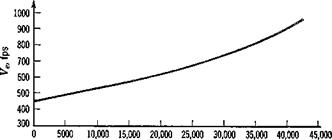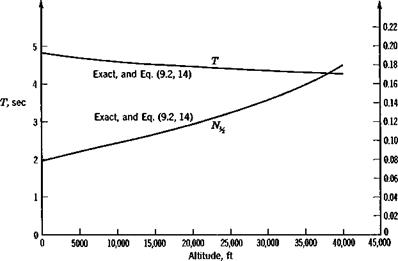EFFECT OF ALTITUDE
When the altitude is varied at constant CWe and constant static margin the density change has two separate effects. The first is on /л and їу which are both smaller at lower altitude, and the second is on the true speed Ve, which also decreases with decrease of altitude. The matrix (9.1,1) is still appUcable, and with the same assumptions as used before the only quantities in it that change are ц and Iy. Computations were carried out for the altitude range 0 to 40,000 ft for CWe = .25 and Kn = .10. The results are shown on Figs. 9.7 to 9.11. As with the speed variation previously discussed, the results would not be expected to be accurate at the highest altitude, where the speed is about 900 fps, i. e. M = .93, since compressibility effects were not included in the aerodynamic derivatives. The speed is seen in Fig. 9.7 to vary over a range of 2:1 as the height changes, and this has a large effect on the phugoid periods. This is evident in Fig. 9.8, where the period is seen to vary with height in the same way as does the speed, qualitatively as predicted by the Lanchester formula. From (9.2,14) it follows that <x>n for the short-period varies approximately as л/p, and hence that T varies
|
Altitude, ft |
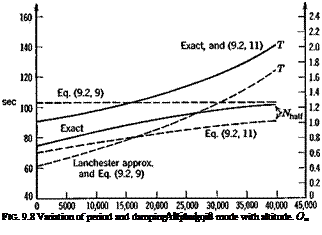 |
|
|
|
|
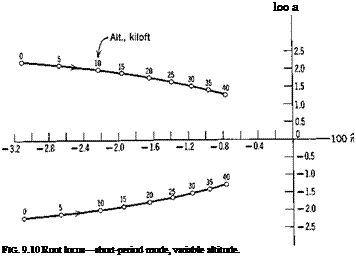 |
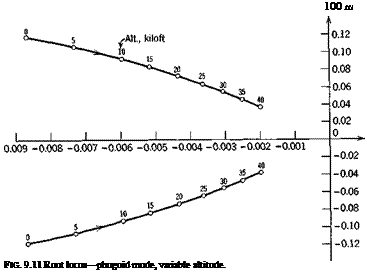 |
approximately as (‘УГреУе)~1. Since peVe2 is a constant at constant Cw the short-period is expected to vary only slightly with height, and this is evident in Fig. 9.9. The damping of both modes is higher in the denser lower atmosphere. This is predicted for the short-period mode by (9.2,14), but not for the phugoid by (9.2,9). The nondimensional roots show large and qualitatively similar variations for both modes in Figs. 9.10 and 11.











